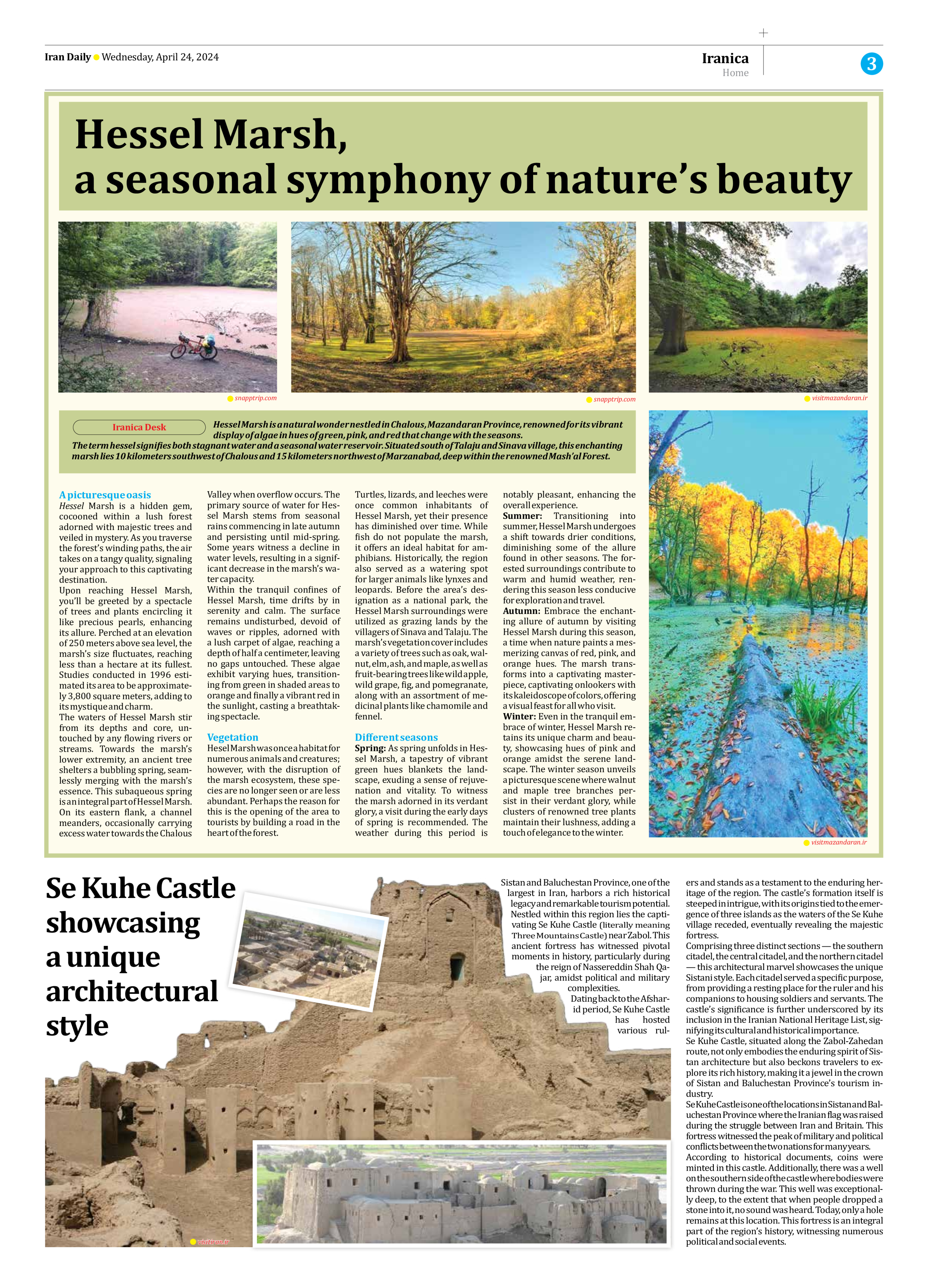
Copy in clipboard...
Se Kuhe Castle showcasing a unique architectural style
Dating back to the Afsharid period, Se Kuhe Castle has hosted various rulers and stands as a testament to the enduring heritage of the region. The castle’s formation itself is steeped in intrigue, with its origins tied to the emergence of three islands as the waters of the Se Kuhe village receded, eventually revealing the majestic fortress.
Comprising three distinct sections — the southern citadel, the central citadel, and the northern citadel — this architectural marvel showcases the unique Sistani style. Each citadel served a specific purpose, from providing a resting place for the ruler and his companions to housing soldiers and servants. The castle’s significance is further underscored by its inclusion in the Iranian National Heritage List, signifying its cultural and historical importance.
Se Kuhe Castle, situated along the Zabol-Zahedan route, not only embodies the enduring spirit of Sistan architecture but also beckons travelers to explore its rich history, making it a jewel in the crown of Sistan and Baluchestan Province’s tourism industry.
Se Kuhe Castle is one of the locations in Sistan and Baluchestan Province where the Iranian flag was raised during the struggle between Iran and Britain. This fortress witnessed the peak of military and political conflicts between the two nations for many years.
According to historical documents, coins were minted in this castle. Additionally, there was a well on the southern side of the castle where bodies were thrown during the war. This well was exceptionally deep, to the extent that when people dropped a stone into it, no sound was heard. Today, only a hole remains at this location. This fortress is an integral part of the region’s history, witnessing numerous political and social events.







